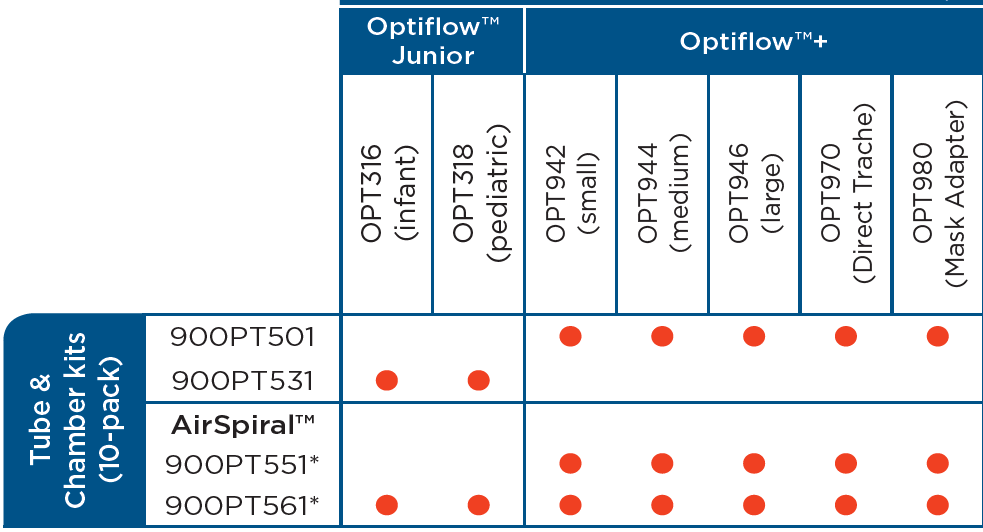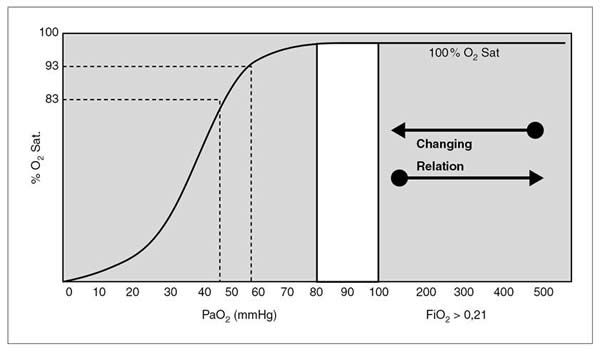oxygen delivery devices and flow rates australia
The required oxygen flow rate can be very low often between 08 and 15 Lmin-1. The percentages available are 24 28 35 40 and 60 oxygen.
Classification of Oxygen Delivery Devices in non intubated.

. For most patients standard nasal cannulae are the preferred method of oxygen delivery with the flow rate varied to achieve the target oxygen saturation. Increasing flow rate beyond 8 litres will not increase the F102 to more than 60. The percentage of oxygen delivery depends on the flow rate and the delivery device.
Depending on a patients inspiratory effort tidal volume speed of inspiration and respiratory rate the PIFR can often exceed the flow rate at which oxygen or an oxygenair mixture is supplied by the device meaning that at the time of PIFR. Set flow rate at 10 to 15 litres per minute. The recommended initial oxygen flow rate for open-circuit systems employing a non-rebreather mask has long been 15 Lmin-1.
Blake DF Crowe M Lindsay D Brouff A Mitchell SJ Pollock NW. The flow rate can be set on the wall tap. These devices deliver a variable inspired oxygen concentration to the patient which depends on the PIFR.
Delivery devices work with different flow rates. When delivering oxygen by wafting the highest oxygen concentrations are achieved when positioning tubing 5-15 cm in front of the face or positioning tubing or a paediatric non-rebreather mask 5-10 cm below. In patients with hypercapnic respiratory failure arterial pH 45 mmHg NIV or invasive ventilation should be considered.
Refer to oxygen protocol Non-Rebreathing Mask. Supplemental Oxygen High Flow Systems generally utilize corrugated tubing Indicated in patients with variable respiratory rate and pattern to. For example the recommended flow rate for a 35 of venturi valve is 8 liters per minute.
Fit the face mask to the patients face and adjust the mask to comfort with elastic straps and nasal metal strip. When tubing was used below the face flow rates between 6 and 8 Lmin produced somewhat higher concentrations than 15 Lmin 5 cm. Can delivery precise and dependable FiO2.
The best O₂ delivery device and flow rate are yet to be determined. When the tap is manually opened the oxygen takes the line of least resistance to the patient via an oxygen delivery device eg. Levels 40 are generally not used and likely dont offer more benefit.
Peak nasopharyngeal F I O 2 was highest with the NRB with a flow rate of 15 Lmin-1 Table 3 though 10-min P tc O 2 values were similar for each device. Low flow device Most common device used for mild hypoxia Can be set between 1 and 6 LPM 24 to 40 FiO2 FiO2 increases approximately 4 with each liter of O2 KorupoluR GJ Needham DMContemporary CriticalCare. 1 shows the simulated patient oxygen sensor and device positioning apparatus.
So the maximum concentration of oxygen that can be delivered by oxygen mask is 60. Depending on the oxygen flow rate there are different colored venturi pieces that are used with FIO2 of 24-60 FIO2 depending on which venturi valve is used. Of the commonly available devices promoted for O₂ delivery to injured divers similar PtcO₂ and nasopharyngeal FIO₂ values were obtained with the three devices tested.
The oxygen flow rate will be indicated on the specific venturi valve used but generally is from 3-10Lmin. Increasing the flow rate to 10 liters per minute increases the total flow to the patient but the oxygen concentration delivered remains at 35. Oxygen Delivery Devices 1 Flow Is A Variable Describing In 2021 Icu Nursing Nursing Tips Critical Care Nursing Pin On Rt Ships Free.
A perfectly normal value is 98. Connect the face mask to the oxygen cylinder. It varies from 0 15L per minute.
Tube with a mask or nasal cannula. Moderate-flow oxygen devices include the partial rebreather mask PRB. There are five different valves available each colour-coded with a specified oxygen flow rate in Lmin and the percentage of oxygen that the given flow rate will deliver written on the side of the mask.
A regulator is attached to the cylinders top and works like a tap allowing the safe adjustment of oxygen flow rate provided in Lmin 1. Comparison of tissue oxygenation achieved breathing oxygen from a demand valve with four different mask configurations. However when breathing with the NRB an O 2 flow rate of 15 Lmin-1 is required to reach these levels.
Adapters deliver set amounts of FiO2 at 24 to 60. VENTURI FACE MAsk Types of oxygen delivery devices. 2435 FiO2 at a flow of 14.
Oxygen Delivery Systems LOW FLOW OXYGEN DEVICES HIGH FLOW OXYGEN DEVICES Cannot deliver constant FiO 2 Maintain constant FiO 2 Flow 6 - 8 Lmin Delivering O 2 at very high flow Mixture of oxygen room air Flow usually 4 times the actual Minute volume FiO 2 varies with tidal volume-Shallow breathing less entrainment of room air high FiO 2. The recommended initial oxygen flow rate for open-circuit systems employing a. Oxygen delivery devices and flow rates emt Get link.
Set flow rate at 5 to 8 litres per minute. Only goes up to 60 FIo2 so not for patients who have significantly high oxygen demands bulky. A pressure reading barometer displays the remaining oxygen.
Flow rate 1-4Lmin 4L will dry the nose 2L is more comfortable. Oxygen flow rate was controlled via a standard wall-mounted flow rate metre CIG Health Care Comweld Group Pty Ltd Australia with testing conducted at a flow rate of 15 Lmin for all devices and additionally for flow rates of 6 and 8 Lmin when using oxygen tubing. Oxygen delivery devices 1.
MORS with an oronasal or intraoral mask demand valve with an. A comparison of the tissue oxygenation achieved using different oxygen delivery devices and flow rates. The percentage of oxygen inspired depends on the flow rate and the delivery device.
Oxygen delivery devices positioning and flow rates Six different oxygen delivery devices were investigated. Low flow device Most common device used for mild hypoxia Can be set between 1 and 6 LPM 24 to 40 FiO2 FiO2 increases approximately 4 with each liter of O2 KorupoluR GJ Needham DMContemporary CriticalCare. These are classified as high flow Oxygen Delivery Devices and low flow Oxygen Delivery Devices.
The increased efficiency is achieved through increased complexity. However anything greater than 90 is considered acceptable. Connect the face mask to the oxygen cylinder.
The normal oxygen levels in a pulse oximeter usually range from 95 to 100. At an oxygen flow rate of 2 lmin the oxygen concentration in the hypopharynx of a resting subject is 25-30. They include Nasal cannulae.
This delivers to the patient a flow rate of 45 liters per minute and an oxygen concentration of 35 percent. 2 to 15 Lmin. The flow rate is how many liters of oxygen per minute your.
A paediatric simple Hudson face mask PFM Oxygen Mask Child Aerflo Australia a paediatric non-rebreather mask PNRB. 200969111 Bailey P Thomsen GE Spuhler VJ et alCrit Care MedJan2007351139145.

Buy Hospital Bed In 2021 Hospital Hospital Bed Best Hospitals

Oxygen Delivery System Side 1 Nursing School Notes Nursing Notes Respiratory Therapist Student

Clinical Guidelines Nursing Oxygen Delivery

Beehive Inspection Checklist Inspection Checklist Bee Hive Bee Keeping

Elf Baby Diaper Pocket Diapers Baby Diaper Covers

Equation For Oxygen Delivery Download Scientific Diagram

High Temperature Level Sensor Fmcw Radar Sino Inst Level Sensor Sensor Radar

Nursing Jobs Are Noble Profession Especially In Aboard You Can Earn More In Aboard On Nursing Professions Emergency Nursing Nursing Jobs Nursing Profession

Respiration Easy Science Oxygen Energy C Cardiovascular System

High Pressure Cylinder Size Chart Welding Gas Chart Welding

To Help Patients Breathe Easier We Sell A Variety Of Oxygen Therapy Supplies Including Portable Oxygen Tanks Oxygen Therapy Oxygen Concentrator Oxygen Tanks

Oxygen Delivery System Side 1 Nursing School Notes Nursing Notes Respiratory Therapist Student

Automatic Oxygen Titration Versus Constant Oxygen Flow Rates During Walking In Copd A Randomised Controlled Double Blind Crossover Trial Thorax

Automatic Oxygen Titration Versus Constant Oxygen Flow Rates During Walking In Copd A Randomised Controlled Double Blind Crossover Trial Thorax
